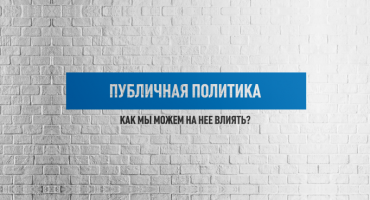In this section, we are going to talk about investigative journalism. One owes way some people define it, is as a type of journalism that tries to discover information of public interest that someone is trying to hide.
So by definition, it is difficult to work, because you are looking for facts, testimony, and evidence that is not easy to find. (slide) So how do you go about planning an investigation?
Firstly, you need to authenticate your idea. In other words, you need to make sure there is some substance to whatever problem or wrongdoing you are looking to investigate. You do not want to commit, time, money, and effort without being sure there is a real story here. This can be done with some evidence such as documents, data or testimony. Once you are confident that it is worth investigating, then come up with a hypothesis or question.
Think of it as a science experiment. Scientists put forward a hypothesis, investigate using tests, and then come to a conclusion as to whether the hypothesis was right. If your investigation was into looking into corruption in sport, your hypothesis might be that money meant for Olympic athletes is being redirected to corrupt administrators disguised as payments to advertisers. Your investigation would then look to gather evidence of who is doing what, how, and for how long. Anyway, back to planning.
Next, you want to look at what sources you can access. Are there documents you can get access to? Is there anyone involved who is willing to talk about what has been happening? Can you use something indirect, such as tax filings to show where the money went? You need to look at what data, documents, and witnesses you can get access to. Next, draw up a budget plan.
This might sound like the boring part, but your success depends on being as efficient as possible with whatever budget you have. How many people can be on the team? How long can you pursue the investigation? Is there any travel? Do you need equipment or office space?
All these things need to be budgeted. It is worth leaving some money unallocated, because you will always have surprise costs, whether its travel, translation or security. You need to plan for the unplanned. The final stage at this point is to create to-do lists and assign tasks. Investigations tend to involve multiple avenues of investigation with information scattered all over the place.
Organising tasks gives responsibility to individuals and begins the process of evidence-gathering in a structured and orderly manner. (slide) As far as the research stage goes, there are a few things to bear in mind. Try and get a mix of primary and secondary sources. So primary sources give first-hand accounts of the topic.
For example, someone who has had first-hand experience of some government corruption would be a primary source. Other sources are secondary sources, such as experts giving analysis or people affected by the corruption, but did not witness it first hand. It is good to have a mix of all these kinds of sources. On the topic of data and experts, it is important to bring in people who can make sense of the information that you are uncovering.
Part of your research should be working out which experts have the insights you need to make sense of documents, data, or general information. Without this, you may miss important information that a trained eye would pick up. Next is to identify any specific gaps in your hypothesis. Remember, the hypothesis is your best guess at what you think is happening. Think of it like a legal team putting together a prosecution case. They would lay out an entire theory of what they believed happened in the crime and then produce evidence to prove it.
You need to do the same. Are there any areas of your theory that don’t make sense? Is there some data needed that would complete the jigsaw? If you can identify these weaknesses in your case you can put research effort into reinforcing those parts of your hypothesis. Finally, understand the difference between qualitative and quantitative research. In simple terms, quantitative research is about giving hard facts..numbers..whereas quantitative research is more about people’s behaviour and feelings towards situations. So quantitative research may show that lots of young people are leaving the country, but qualitative research, which might involve interviewing lots of young people, would give more understanding of why they were leaving.
Next, you need to think about building a team. Unless you have lots of time, you will likely need to work as part of a team. What roles would be needed? Who will report to who in the hierarchy? Do you need to have regular meetings or can you all work separately? Think about the tasks that need doing when considering your team. This brings me to the next point. You will probably want researchers. Just make sure they have research skills that are relevant to the topic. For example, if you need them to research long reports or complicated data, make sure they have those skills. Next up is experts. Most subjects need specialist insights from experts. Make sure your experts are impartial and will not skew your findings.
Finally, think about support. There may be general admin work or the need for a driver or translater. If you forget to look after these roles in the team things can fall apart quickly. There are some very useful tools you can use. Have a look at your local freedom of information laws. Could they be useful to your investigation? One of the dangers of investigations is you have a lot of information
Post-it notes, written notes, things on computers. Something like Evernote is a great way to pull this together. As its name suggests Evernote is for taking notes, but all for organising links and keeping track of useful websites and information. It works on mobile devices and computers. Oligrapher is a tool based on connections. Connections between people. With Oligrapher we are talking about networks of influence. Which billionaire knew which politician? This can sometimes be helpful to show how people are connected around a particular story. Another really useful tool is Openrefine. Openrefine prides itself as a tool that with a price helps you clean up messy data. Openrefine is really for dealing with big data. It can help you find mistakes or where the same information has been inputted multiple times. In short, it allows you to be more confident about the accuracy of your data. Another one to look at is Linkurious and this is all about visualising data. Linkurious is all about bringing multiple bits of data together in a visual form so it helps you identify anomalies and problems. So in closing, investigative journalism is about putting forward a question or hypothesis. Finding evidence of what’s really happening and telling the story in a way that your reader or your listener can fully understand.
If you have found a spelling error, please, notify us by selecting that text and pressing Ctrl+Enter.






